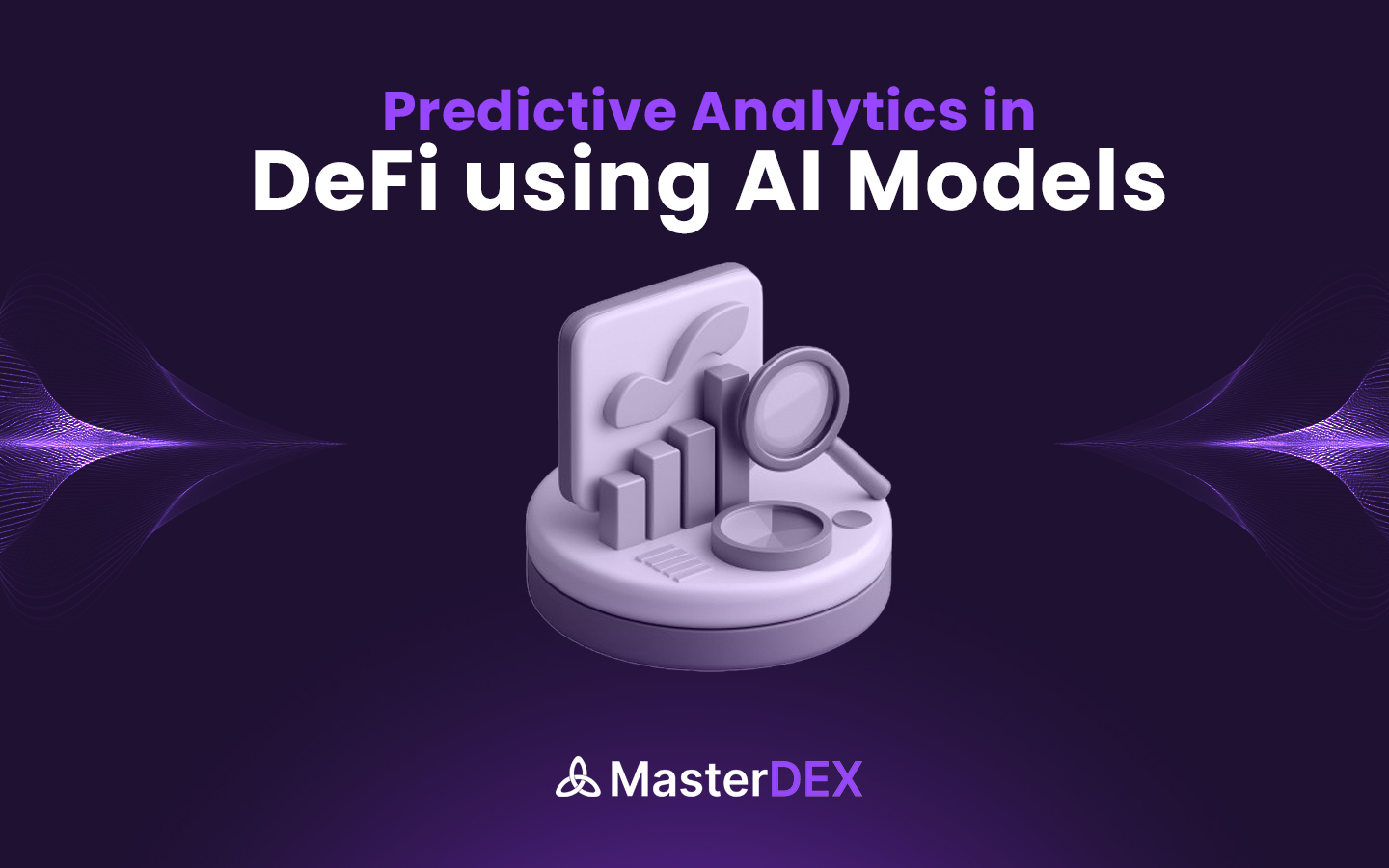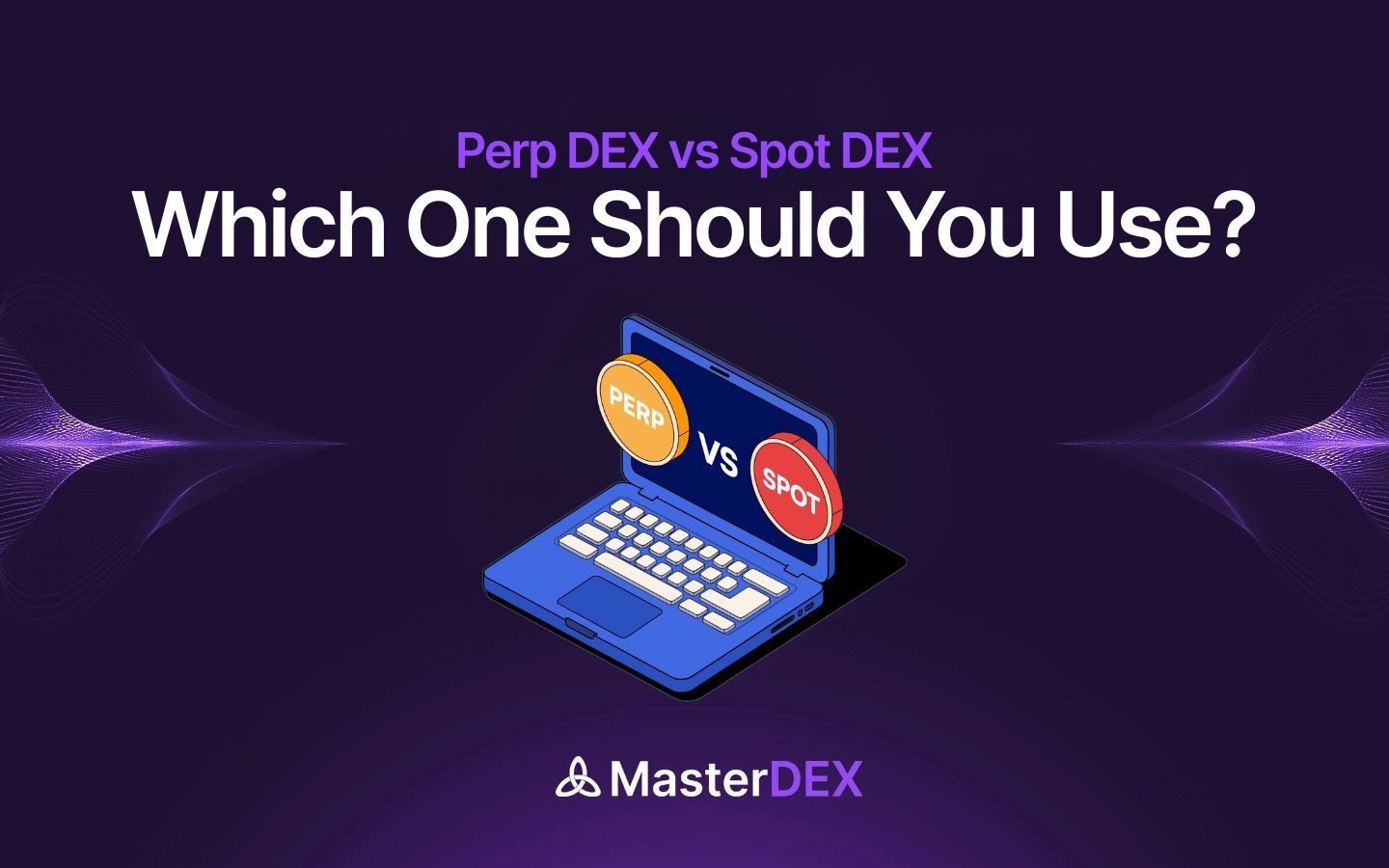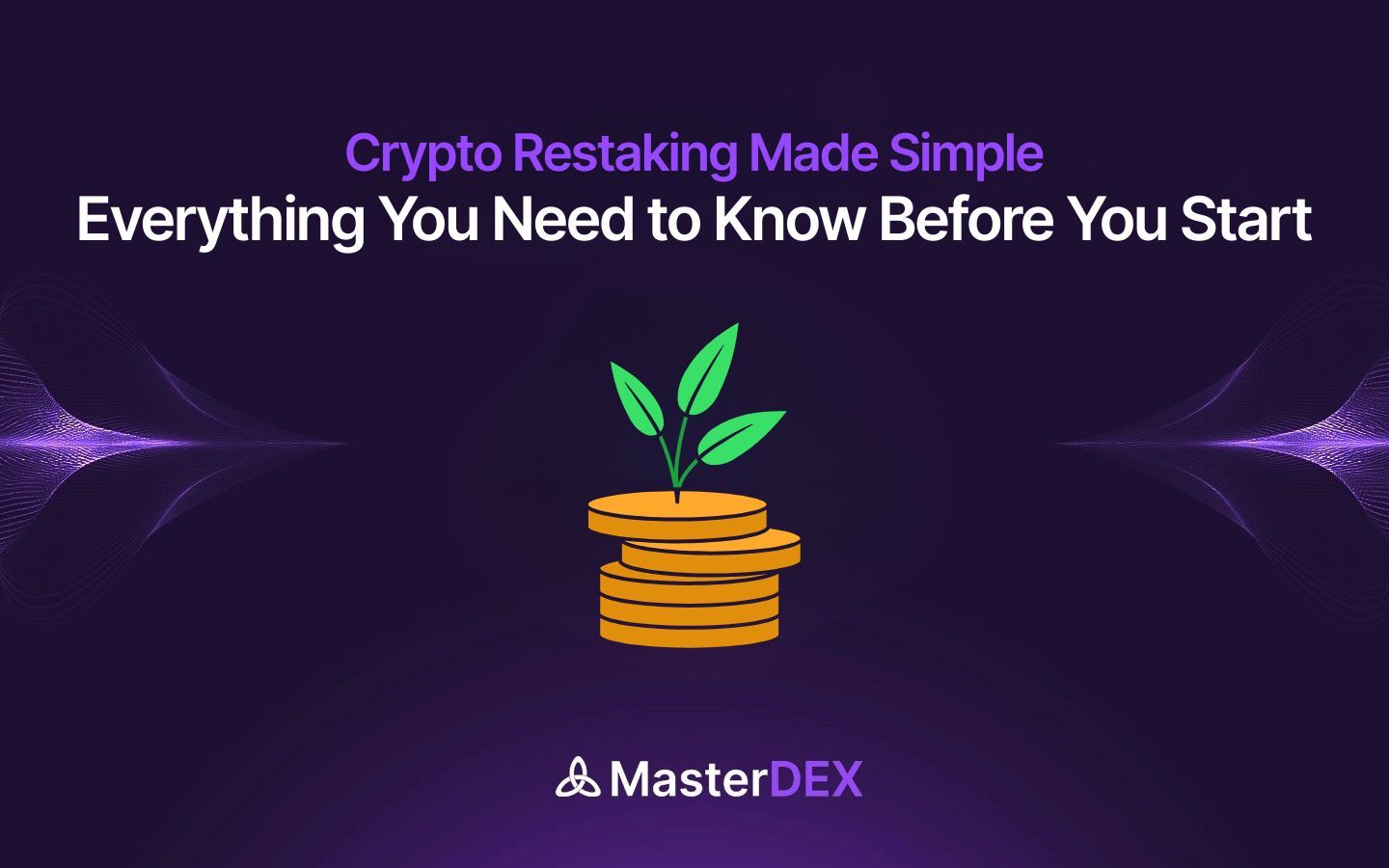Table of Contents:
ToggleWhat is Predictive Analytics in DeFi?
Predictive analytics in the world of decentralized finance (DeFi) refers to the use of artificial intelligence (AI), machine learning models, and statistical algorithms to forecast future events based on historical and real-time blockchain data. In an ecosystem known for its volatility and constant innovation, these AI-driven insights allow traders, investors, and protocols to anticipate market trends, potential risks, and user behaviors with greater accuracy. Unlike traditional finance, where data sources are relatively centralized and structured, DeFi operates in a fragmented and open environment, producing massive amounts of raw, complex data. Predictive analytics turns that chaos into clarity, enabling smarter trading decisions, early detection of vulnerabilities, and proactive adjustments to market strategies. As the pace of DeFi accelerates, AI-powered prediction isn’t just a tool, it’s becoming a vital edge.
How AI Models Enhance Predictive Accuracy in DeFi?
Artificial Intelligence is not just a buzzword in the world of finance. It’s a critical enabler of next-generation capabilities, particularly in decentralized ecosystems like DeFi. In traditional finance, forecasting tools rely heavily on historical data and linear regression models. DeFi, however, is an entirely different terrain. Its decentralized, pseudonymous, and real-time nature generates vast volumes of messy, unstructured, multi-chain data. This is where AI models truly shine by identifying complex patterns, adjusting to anomalies, and adapting on the fly.
At the heart of these AI systems are machine learning (ML) algorithms that go far beyond basic charts and trendlines. Deep learning networks like Recurrent Neural Networks (RNNs), especially Long Short-Term Memory (LSTM) models, are capable of understanding sequential data, perfect for capturing price movements, liquidity pool activity, gas fee fluctuations, and wallet behaviors over time. These models don’t merely react; they learn from each market cycle, adapting continuously to DeFi’s volatile environment.
Natural Language Processing (NLP) is another game-changer. With it, AI can interpret sentiment across Telegram chats, Discord communities, Reddit threads, governance forums, and even crypto Twitter. When combined with quantitative data, these signals help form a more nuanced, human-level understanding of what drives price action. In this way, AI becomes a bridge between social sentiment and technical indicators.
Incorporating these insights into practical tools is where DeFi begins to gain serious momentum. One of the most innovative platforms pushing this boundary is MasterDEX, which is a powerful DeFi aggregator that acts like a “Google for DeFi.” Unlike conventional aggregators that only pull token prices and swap routes, MasterDEX integrates smart data layers and AI-based ranking mechanisms. When users search for a token or liquidity pool, they don’t just see the cheapest trade, they get context such as historical trends, risk signals, social mentions, real-time volume spikes, and wallet behavior alerts.
MasterDEX leverages AI models to identify liquidity anomalies, flag sudden on-chain movements, and even suggest protocols offering safer or higher-yielding options based on predictive confidence. It’s not just about aggregating information, it’s about anticipating user intent and guiding them toward optimal decisions. Whether you’re yield farming, swapping tokens, or researching a new protocol, MasterDEX reduces cognitive overload by using AI to pre-filter the noise.
By translating AI outputs into intuitive dashboards and search results, platforms like MasterDEX are democratizing predictive power. Retail users no longer need to manually sift through dozens of charts or wallets to understand a project’s trajectory.
In essence, AI doesn’t just enhance prediction accuracy, it transforms how DeFi users engage with information. Instead of asking “What happened?”, we now ask “What’s likely to happen next?” and get informed answers. As more platforms follow the MasterDEX model, we’re witnessing the evolution of DeFi from a raw, data-rich jungle into a smarter, more navigable landscape.
Key Use Cases of Predictive Analytics in DeFi
Predictive analytics in DeFi is not a niche utility. It is a transformative layer being adopted across various segments of the ecosystem. As blockchain networks generate massive, real-time streams of transactional and behavioral data, AI models can forecast patterns that create a competitive edge. Let’s explore five of the most powerful and practical use cases driving value in the decentralized financial landscape.
1. Price Forecasting for DeFi Tokens
One of the most popular applications is forecasting the price movement of DeFi tokens. AI models analyze historical data, market sentiment, trade volumes, and even wallet behaviors to estimate future price trends. Unlike static technical analysis tools, predictive models use deep learning architectures, such as LSTM networks, to identify patterns in highly volatile markets. While these forecasts don’t guarantee accuracy, they offer probabilistic insights that allow traders to set informed stop-losses, entry zones, and exit strategies. Platforms like MasterDEX can display these forecasts directly within token search results, allowing users to gauge both sentiment and forward-looking momentum in one view.
2. Liquidity Flow Prediction and Pool Health Monitoring
Decentralized liquidity pools depend on steady and diversified participation to function efficiently. But when liquidity providers exit in large numbers, or when whales disproportionately influence the pool, it often results in high slippage and increased risk of impermanent loss for users. Predictive analytics models, powered by AI, assess wallet clustering, volume spikes, and historic LP behaviors to forecast liquidity changes before they occur. By anticipating where liquidity will migrate or dry up, platforms like MasterDEX can dynamically recommend safer trading paths or suggest alternate protocols offering similar exposure with less volatility. This predictive layer enables a smarter DeFi UX that goes beyond simple price comparisons.
3. Yield Optimization and Farming Opportunities
DeFi users are always on the hunt for the highest APY, but farming opportunities can turn unprofitable within hours due to rapid inflows or unsustainable token emissions. Predictive analytics uses real-time vault performance, protocol reward schedules, gas fees, and user engagement metrics to anticipate which farms or vaults are likely to yield higher returns in the near future.
4. Risk Detection and Rug Pull Prevention
In an industry that moves faster than regulation, security risks are everywhere, from smart contract vulnerabilities to classic rug pulls. Predictive models trained on past exploit patterns can detect early signs of malicious intent, such as contract code anomalies, suspicious wallet interactions, sudden ownership changes, or abnormal token minting. By analyzing these patterns across thousands of projects, AI systems can flag risks in advance and generate “trust scores” for new or trending projects.
5. User Behavior Forecasting and Wallet Intelligence
Every wallet tells a story, and AI models can read those stories at scale. Predictive analytics makes it possible to anticipate how certain wallet clusters, especially high-volume traders or smart money addresses, might act next. By analyzing their previous patterns of pool exits, staking moves, or token allocations, AI can estimate the likelihood of large-scale liquidity exits or token dumps. This isn’t just helpful for traders; protocols themselves use these insights to plan product updates, token unlocks, or reward campaigns.
Together, these use cases highlight the incredible potential of predictive analytics to reshape DeFi from a reactive experience to a proactive, data-informed ecosystem. As tools like MasterDEX continue to advance, the next wave of DeFi innovation will not just be about access, but about foresight.
| Use Case | How It Works | Benefit |
| Price Forecasting | AI analyzes historical trends and on-chain data | Smarter trading and better timing |
| Liquidity Prediction | Monitors LP behaviors, volume shifts, and token flows | Avoid slippage, optimize swaps |
| Yield Optimization | Predicts APY trends based on tokenomics and vault behavior | Maximized returns with reduced risk |
| Risk & Rug Pull Detection | Detects suspicious patterns in contract or wallet behavior | Early warning against scams or protocol failure |
| Wallet Behavior Forecasting | Tracks on-chain activity and wallet clusters | Anticipate whale moves and user exits |
Benefits and Limitations of AI-Powered Predictive Tools
As DeFi becomes more complex and crowded, the integration of predictive analytics using AI is not just a luxury, it’s increasingly becoming a strategic necessity. These tools are redefining how users interact with decentralized protocols, how protocols anticipate market dynamics, and how aggregators like MasterDEX deliver personalized, real-time intelligence to users. However, like any technology, AI-powered predictive analytics carries both tremendous advantages and a set of inherent challenges.
Benefits of AI-Powered Predictive Tools
The first and most obvious benefit is speed and scale. Human traders, no matter how experienced, cannot possibly process the volume of data that DeFi throws out every minute, from token swaps and smart contract interactions to governance votes and cross-chain liquidity events. AI tools handle this deluge effortlessly, continuously analyzing and correlating hundreds of data points to produce insights in near real-time. This is exactly what makes MasterDEX so powerful; it doesn’t just pull raw data; it interprets and refines it on the fly, surfacing only what’s actionable.
Another significant advantage is objectivity. Markets are emotional. FOMO and FUD often drive irrational behavior. AI, on the other hand, relies on logic, pattern recognition, and statistical modeling. It doesn’t buy into hype or panic, it simply recognizes emerging trends and flags anomalies. For retail users navigating meme-driven coins and volatile DeFi protocols, this kind of emotionless clarity can be the difference between informed participation and reckless speculation.
There’s also the advantage of accessibility. Predictive analytics tools, especially when integrated into platforms like MasterDEX, reduce the technical barrier to entry. You don’t need to be a data scientist or Solidity developer to understand what’s happening on-chain. A beginner DeFi user can access token-level predictive insights, risk alerts, and wallet behavior summaries, all powered by backend AI models, without needing to write a single line of code.
Limitations of AI-Powered Predictive Tools
However, the technology is not without its limitations. Perhaps the most critical issue lies in data quality. While DeFi is transparent, it’s not always structured. Data across multiple blockchains can be duplicated, misaligned, or even manipulated. Garbage in, garbage out, as the saying goes. If the training data for AI models is flawed, the predictions that result can be misleading.
There’s also the risk of overfitting and false confidence. AI models are great at identifying patterns from historical data, but they can falter when unexpected black swan events occur like protocol exploits, regulatory crackdowns, or coordinated social media pumps. Traders who treat AI forecasts as gospel, rather than probabilistic guidance, might fall into the trap of trusting a model more than their own critical thinking.
Another concern is model transparency. Many AI systems operate as black boxes, making it hard to audit how they reach conclusions. This is particularly risky in decentralized environments, where the goal is often trustless, verifiable decision-making. While MasterDEX and other leading platforms are moving toward explainable AI and on-chain validation of insights, full transparency remains a work in progress.
Lastly, there’s the question of ethical use. If AI models are trained to exploit retail behavior, front-run trends, or manipulate governance signals, they risk concentrating power in the hands of those who control the algorithms. Responsible platforms must ensure that predictive models are used to empower users, not outsmart or extract value from them.
In summary, predictive analytics powered by AI is one of the most promising innovations in DeFi today. When paired with platforms like MasterDEX that focus on clarity, usability, and fairness, these tools can democratize access to foresight, something previously reserved for only the most well-funded players. Yet, like every tool, their value depends on how they’re used and who they’re built to serve.
Conclusion
Predictive analytics powered by AI is quietly becoming the backbone of smarter decision-making in DeFi. From price forecasts and yield strategies to risk detection and wallet behavior insights, it enables users and protocols to act proactively rather than reactively. Platforms like MasterDEX are leading this evolution by turning raw blockchain data into clear, personalized intelligence. As DeFi grows more complex, predictive tools won’t just enhance performance; they’ll define the next generation of decentralized finance.



